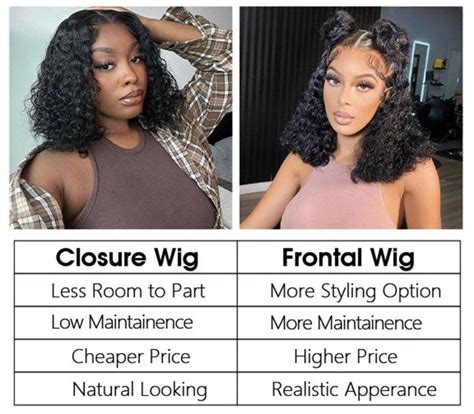5 Key Differences Between Closure vs. Frontal: Which One Is Right for You?

Introduction
In the world of hair extensions, closure and frontal are two popular methods used to achieve a seamless, natural-looking look. Whether you’re looking to add volume, cover up thinning areas, or experiment with new styles, it’s essential to understand the key differences between these two techniques to make an informed decision.
1. Construction
-
Closure: A closure is a small, circular piece of hair that is weft-sewn onto an area of your scalp to create a center part. It is typically used to cover up thinning areas or create a more voluminous look.
-
Frontal: A frontal is a larger, rectangular piece of hair that covers the entire front of your head, from ear to ear. It creates a more natural-looking hairline and allows for more styling versatility.
2. Coverage Area
- Closure: Provides coverage for a specific area, such as a thinning crown or a center part.
- Frontal: Offers full coverage, covering the entire front of your head and creating a more natural hairline.
3. Styling Options
- Closure: Closure pieces can be top-parted or middle-parted, but they do not allow for a side part.
- Frontal: Frontal pieces offer the most styling versatility, allowing you to part your hair anywhere you like, including side parts.
4. Maintenance
- Closure: Closures require less maintenance than frontals. They can be washed and styled less frequently and do not need to be trimmed as often.
- Frontal: Frontals require more maintenance. They need to be washed, conditioned, and trimmed more frequently to maintain their natural appearance.
5. Cost
- Closure: Closures are typically less expensive than frontals due to their smaller size and lower maintenance requirements.
- Frontal: Frontals are more expensive than closures due to their larger size, higher maintenance requirements, and more natural-looking appearance.
The best choice for you depends on your individual needs, preferences, and budget.
Consider a Closure if:
- You want to add volume or cover up thinning areas.
- You don’t want to spend a lot of time maintaining your extensions.
- You are on a budget.
Consider a Frontal if:
- You want a more natural-looking hairline.
- You want maximum styling versatility.
- You are willing to invest in high-quality extensions and regular maintenance.
Pain Points
- Closure: May not provide enough coverage for large areas of thinning hair.
- Frontal: Can be time-consuming and expensive to maintain.
Common Mistakes to Avoid
- Choosing the wrong size or type of closure or frontal.
- Not getting a professional installation.
- Over-washing and styling the extensions.
- Using harsh chemicals or heat on the extensions.
-
Which is more durable? Frontals are generally more durable than closures due to their larger size and stronger construction.
-
Which is more comfortable to wear? Closure pieces tend to be more comfortable to wear than frontals because they are smaller and lighter.
-
Can I switch between closure and frontal? Yes, you can switch between closure and frontal, although it may require a professional installation.
-
How long do closure and frontal extensions last? With proper care and maintenance, closure and frontal extensions can last up to a year or more.
-
Can I sleep in closure or frontal extensions? Yes, you can sleep in both closure and frontal extensions, although it’s recommended to use a satin pillowcase to protect the hair.
-
Can I swim in closure or frontal extensions? Yes, you can swim in both closure and frontal extensions, although it’s important to rinse them out with fresh water afterward to remove any chlorine or salt.
Whether you choose a closure or a frontal, it’s important to find a qualified professional to install and maintain your extensions. With proper care, you can enjoy beautiful, natural-looking hair extensions for years to come.
